Yes.
The colours of the FOSIL stages serve two instructional purposes, and one practical one.
Firstly, one of the main reasons for basing FOSIL on Barbara Stripling’s Model of Inquiry is that it is both logical and simple without losing any of its explanatory power for its simplicity.* Colour initially served only as an aid to remembering the stages and their order in the process, especially for younger students. However, it also occurred to me that different colours have different cognitive, social & emotional, and physical associations, and I spent quite some time investigating these associations. I have, therefore, done my best to assign the colour to each stage that seems to me to be most closely associated with what is happening in that stage at a cognitive, social & emotional, and physical level (see below).
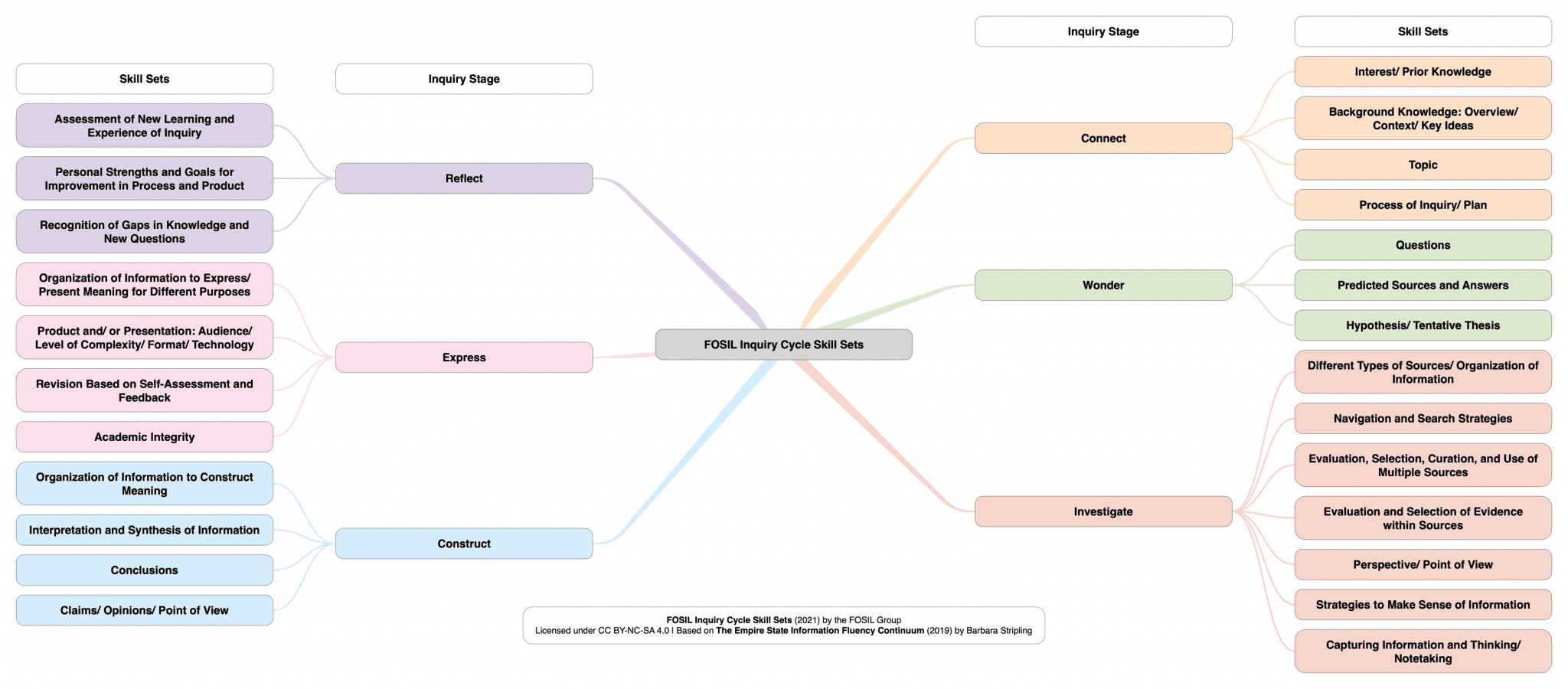
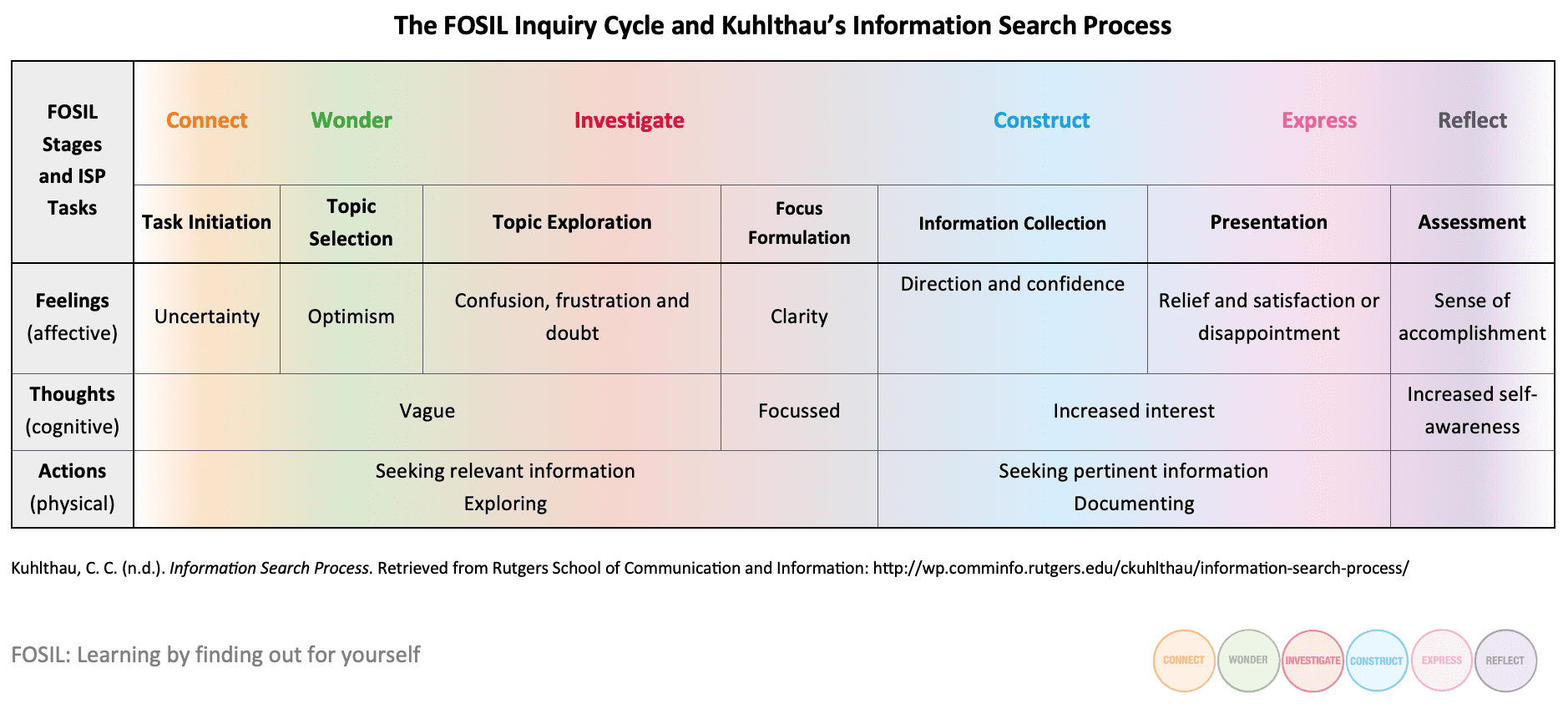
Secondly, being able to identify/ recognise a stage by its colour helps to locate ourselves within a dynamic learning process, and this has both shaped and is reflected in our approach to graphic organisers. Unlike the Empire State Information Fluency Continuum (ESIFC), which FOSIL is based on, which approaches graphic organisers from the perspective of individual skills, FOSIL approaches graphic organisers from the perspective of stages and the dynamic movement between stages (see below). This complements the extraordinary work done by Barbara Stripling and her colleagues in New York City and State, in that it allows us to work up from individual and age-appropriate skills into stages in the inquiry process, and/ or to work down from one or more stages in the inquiry process to individual and age-appropriate skills that enable those stages in the inquiry process.
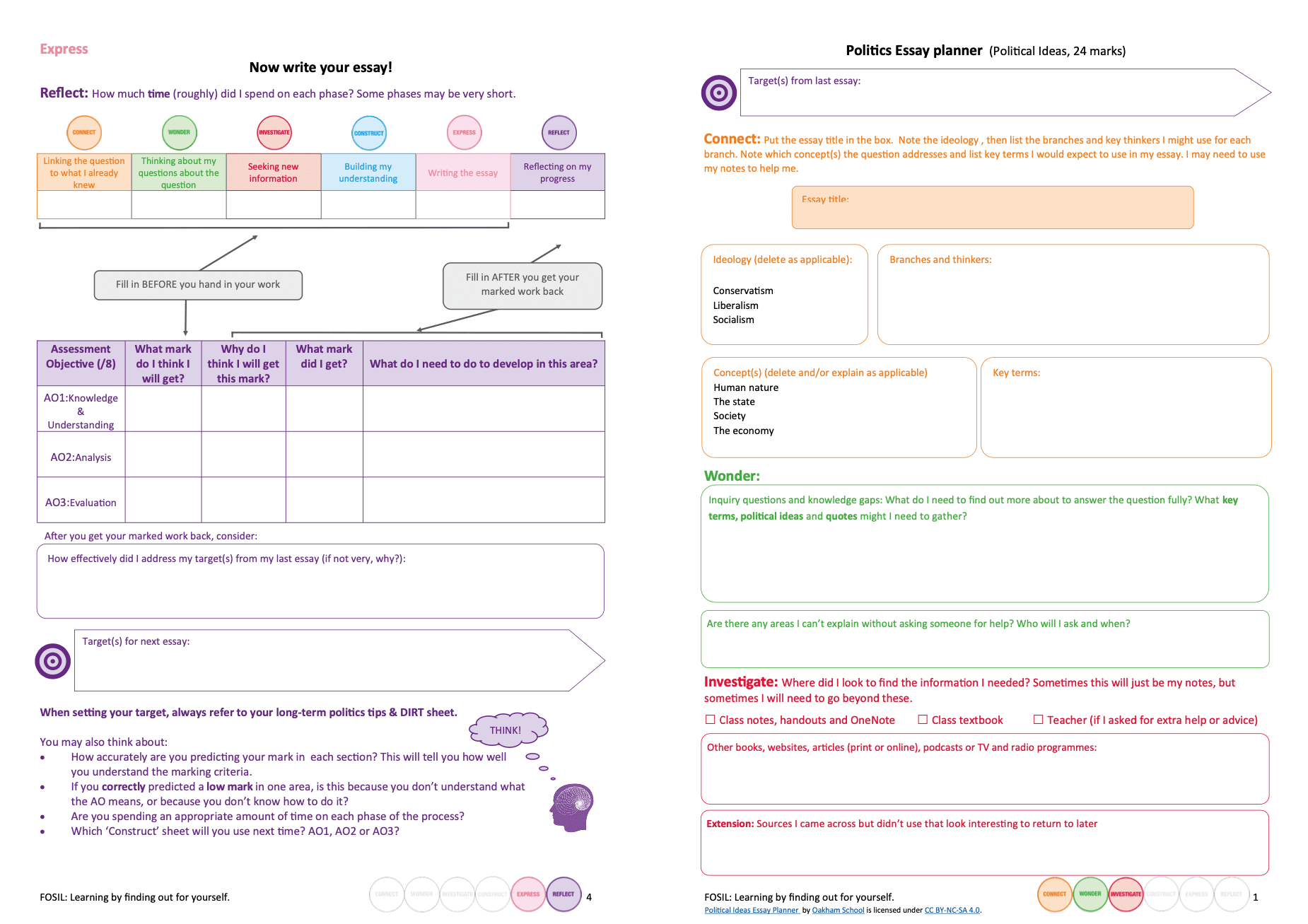
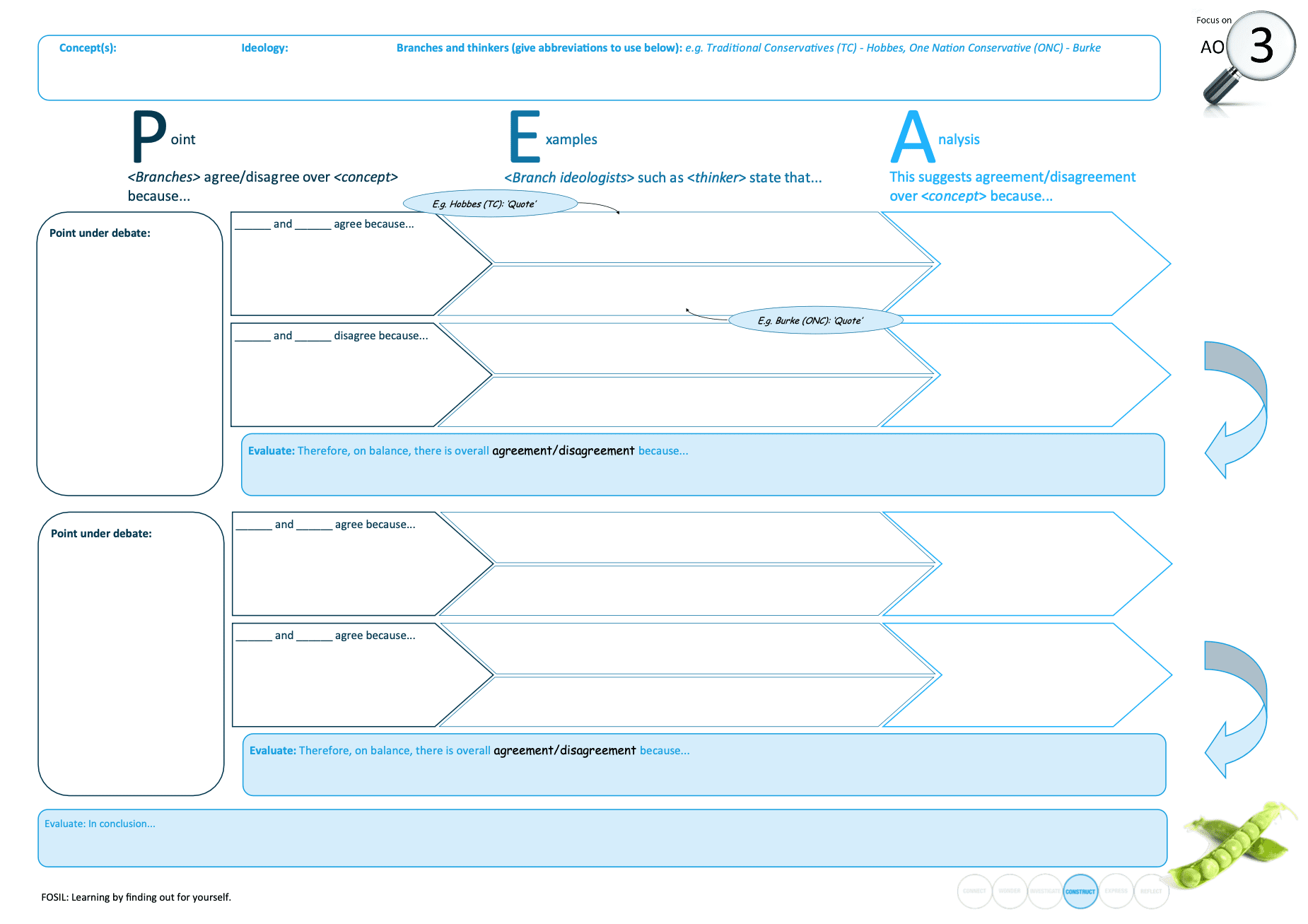
This sense of place in the inquiry process is reinforced in the footer (see below and “FOSIL template” in Resources – full credit to Jenny for this), which also helps when colour is not appropriate/ possible, for example, when printing without access to a colour printer.
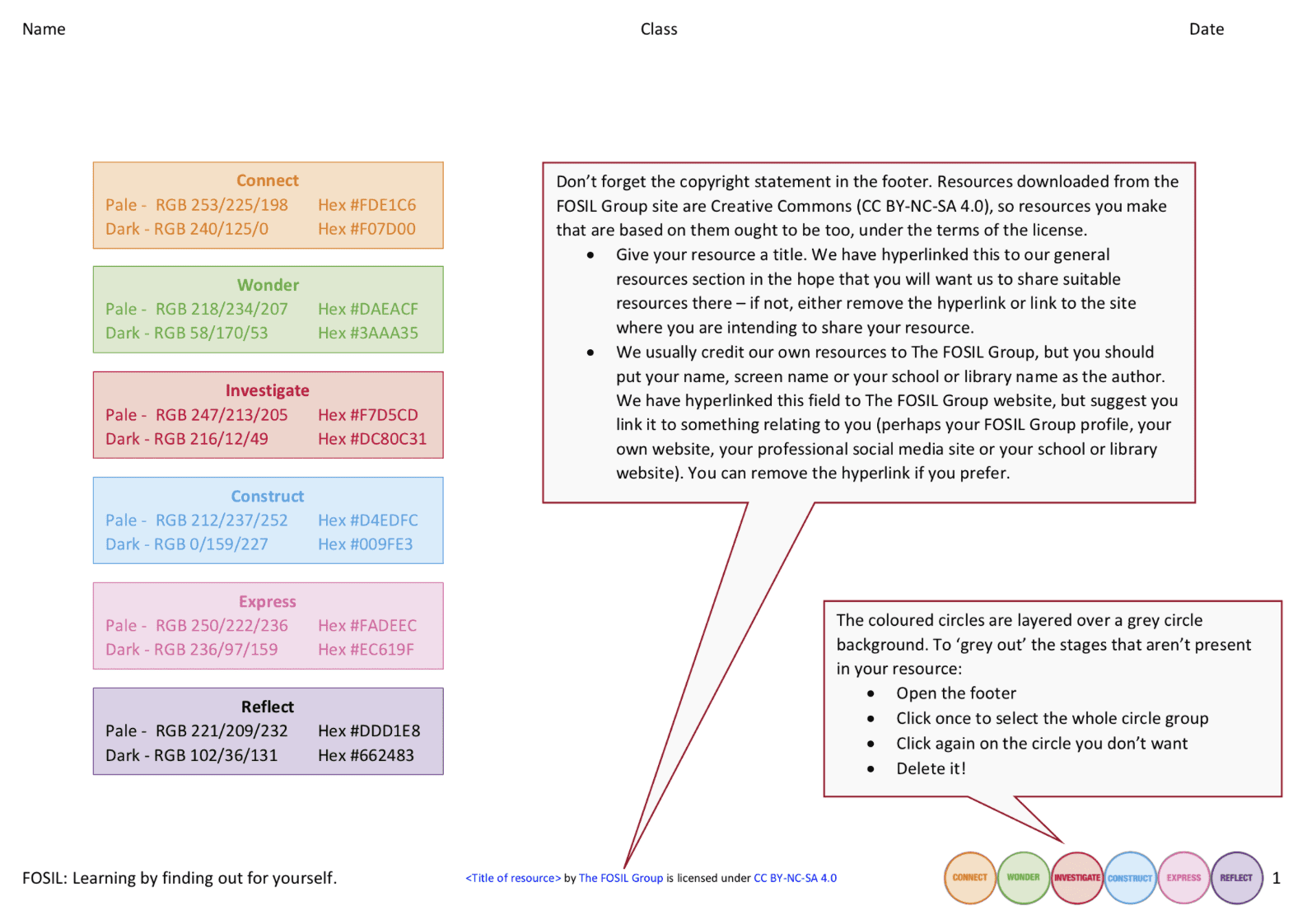
Thirdly, consistency in our use of colours grows a shared vocabulary that allows us to more easily and effectively collaborate on making the school library integral to the educational process through inquiry.
*The other being the underlying framework of inquiry and related learning skills that enable the process.